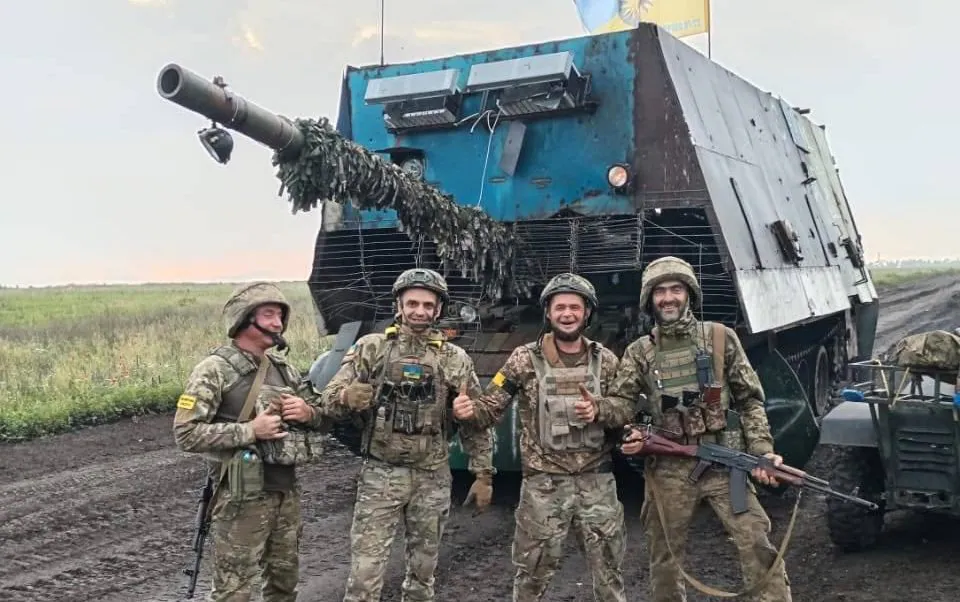The most significant development brought to our world by the Russia-Ukraine war is the advent of combat drones. To date, I have written three articles about combat drones, focusing on how they are used. In this article, however, I will discuss how we can avoid drones, if possible.
I would like to start with the most primitive methods. At the forefront of these primitive drone avoidance techniques are “turtle tanks,” which are tanks surrounded by metal plates. These monstrosities, produced with the logic of spaced armor used on tanks, provide protection against kamikaze drones to a certain extent. The point I am talking about is at most two drones. It’s highly predictable that the thin plates used in these vehicles would shatter after an average of two kamikaze drone attacks. The main downside of these vehicles is that soldiers are carried inside the plates on top of the tank, considering it safe. Even if the tank itself is unharmed in a kamikaze drone attack with AT RPG munitions, it is completely natural for the personnel on top to lose their lives.
Of course, being able to neutralize two kamikaze drone attacks isn’t too bad. The tank gains a small advantage. However, the worst aspect of this armor is that it completely eliminates the turret’s mobility. It’s a mind-boggling decision. You’re essentially discarding one of the key features that differentiate a tank from an ordinary cannon or howitzer. Moreover, this armor is quite heavy, significantly reducing the tank’s speed. Due to these major issues, a lighter addition like fish nets was used instead.
Compared to turtle tanks, this method affects the mobility of the turret and tank less. The idea is to prevent kamikaze drones from hitting the tank by getting caught in the fish net. However, there is a problem here as well: drones can attack both vertically from high altitudes and horizontally from a low altitude. Even putting this aside, it’s very difficult to stop a kamikaze drone with enough weight and speed this way. This defense method is only successful at stopping slow-moving kamikaze drones. Still, calling it a bad method would be an exaggerated criticism.
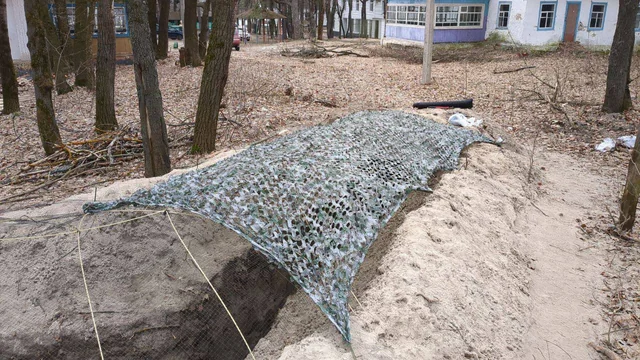
Speaking of it, I would like to mention the “fish net” method. This method is also used in trenches. It works better in trenches than it does for tanks. The reason is that the trenches don’t have exposed sides like tanks and, thanks to the camouflage covering them, they block the view of kamikaze drones using low-quality analog video transmission. However, there’s a small drawback: it makes it difficult to exit the trench. Therefore, it’s more practical to use this fish net system in sections near the entrance of the trench shelter.
While trenches are protected this way, bunkers are much easier to protect. Bunkers, which naturally aren’t a prime target for kamikaze drones, are usually protected by a short zigzag tunnel at the entrance and a blanket. Yes, you heard that right, a blanket. A thick blanket hung at the entrance of the bunker with the help of at least two nails not only blocks kamikaze drones but also prevents visibility in the event of a raid and stops explosive materials like grenades. According to a few soldiers in the area, this method is quite effective, even offering the ability to stop or reduce the impact of shrapnel caused by mortar and artillery fire.
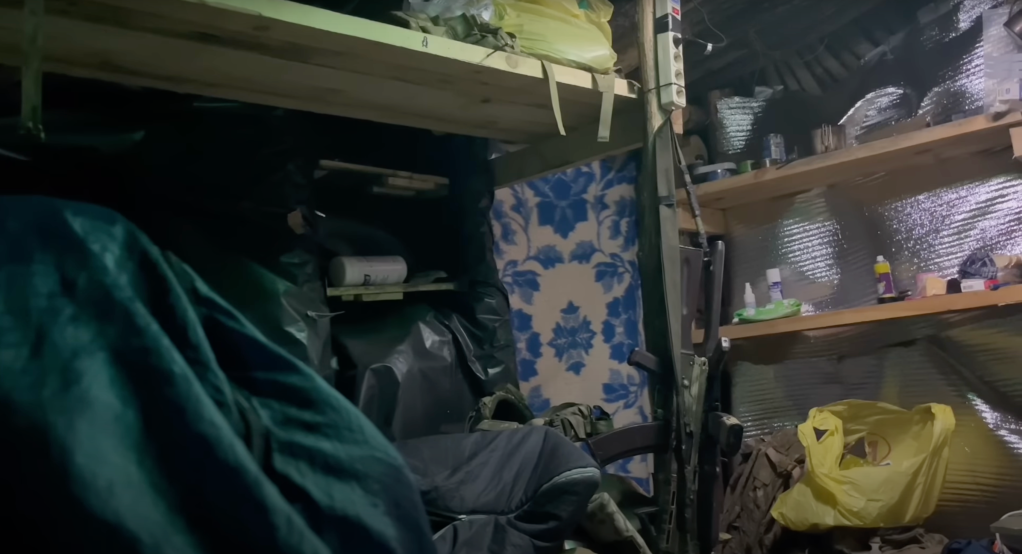
When we think of ways to block drones, the first thing that comes to mind is signal jammers. Drones are controlled using signals in specific frequencies. Therefore, if we know the frequencies drones use, we can interfere with them. Signal jammers are actively used in the Russia-Ukraine war. Thanks to jammers used in critical areas, it’s possible to clear a certain distance from drones. That’s why we usually see defenseless targets being hit in kamikaze or bomber drone videos. Jammers are used in specific frequency ranges and limited distances, so they’re not a practical solution for soldiers in the field. Since they are difficult to transport and power, they are only found in certain areas on the frontline.
There are two types of signal jammers used against drones. The first is RF jammers, which disrupt radio signals like 2.4GHz and 5.8GHz used by drones, cutting communication between the pilot and the drone. This method doesn’t have much success against kamikaze drones. Even if the RF signal jammer is activated while the drone is flying with steady gas and control towards a distant fixed target, the drone will continue to follow the last commands it received from the controller and may still hit the target, albeit with a low probability. However, RF jammers are highly effective against bomber drones. As you may know, bomber drones attack by staying over a target and dropping munitions. In most cases, they release their munitions based on the signals they receive from the controller, and in this scenario, RF jammers block the attack.
The second type of signal jammer is GPS spoofing. This method sends false location data to the GPS on the drone, causing it to fly uncontrollably. However, drones used in war zones don’t use GPS. The reason they don’t use GPS is to prevent the enemy from intercepting GPS signals, identifying the pilot’s location, and launching mortar or artillery strikes.
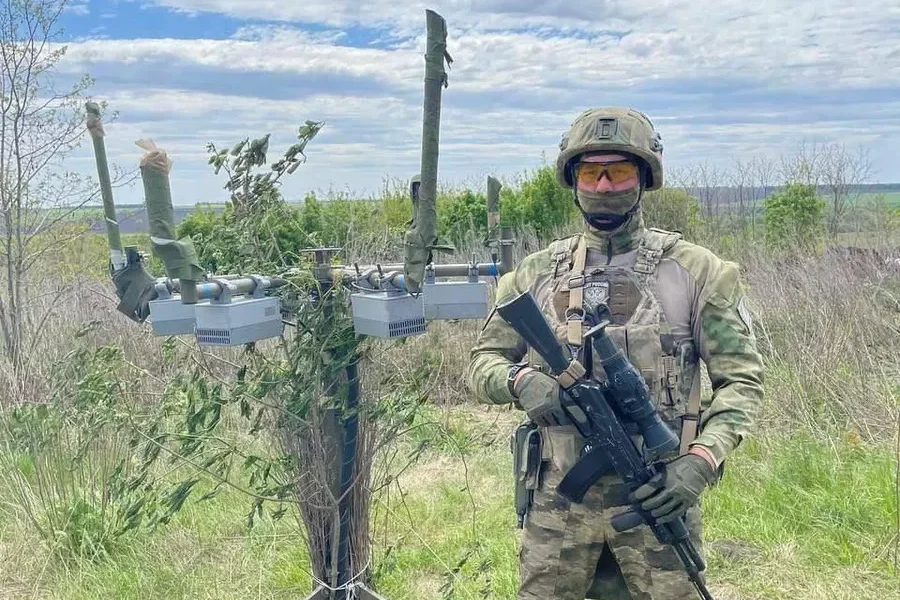
Furthermore, both sides use relay drones, which are signal boosters, to reduce the impact of signal jammers. Relay drones carry equipment that strengthens the signals sent from the controller to the drone. This reduces the effectiveness of signal jammers in the area where the drone is flying. This is not a definitive solution. Bomber drones are rendered useless by signal jammers despite the presence of relay drones, as I explained earlier. However, the relay drone system is quite effective for kamikaze drones. The use of relay drones, which shorten the distance the kamikaze drone can travel with steady gas and control, becomes crucial in areas where there are signal jammers.
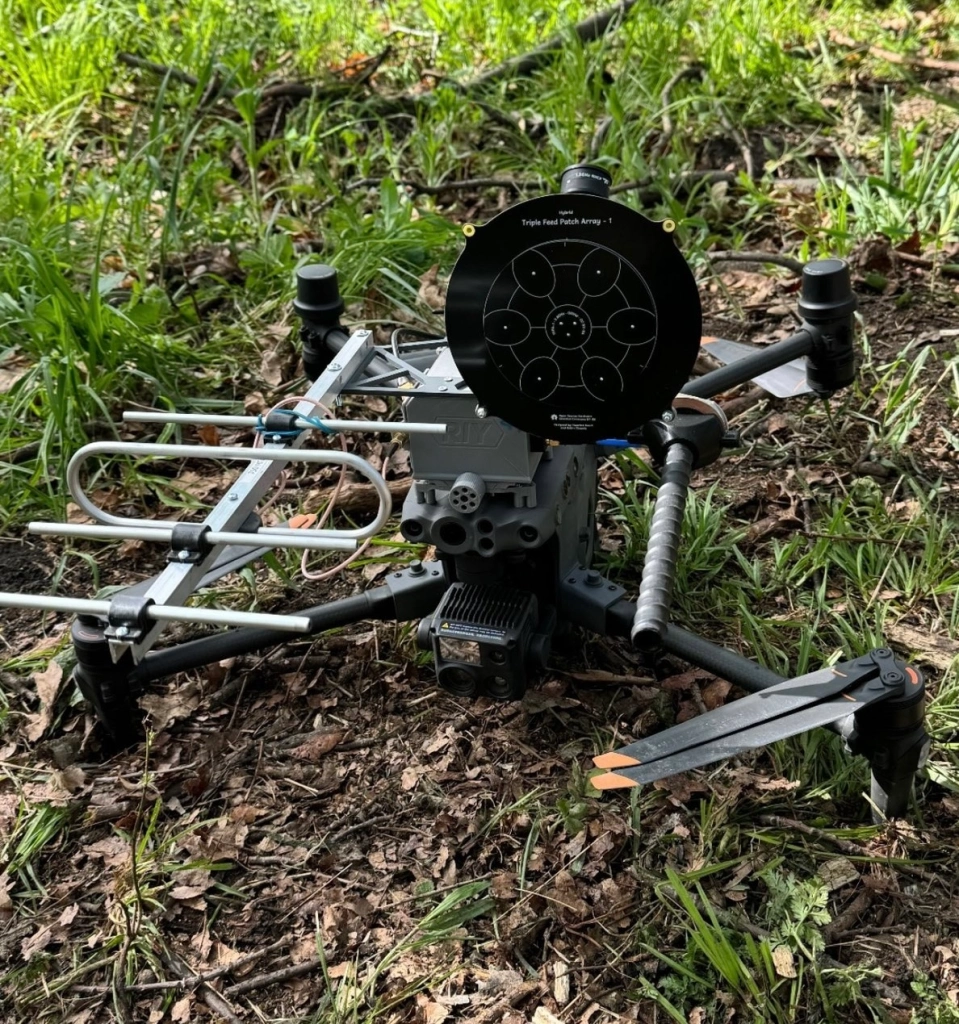
Cutting off the signal isn’t very efficient for soldiers in the field. However, capturing these signals is of vital importance. How would that work? As I mentioned earlier, drones communicate using specific frequency ranges. Kamikaze drones transmit video using the 5.8GHz frequency. If you have a device that can capture this frequency, you can watch the transmitted video. The prices of these types of video receivers are quite affordable. You can find these products online by searching for “FPV receiver monitor,” and they cost around $100. So, what kind of advantage does this device provide to soldiers in the field?
There are two types of signal receivers: those with screens and those without. Both are quite useful. The models without screens alert you when they capture a signal within the frequency range used by drones. This way, you can become more vigilant knowing there’s drone activity in your vicinity. The models with screens not only alert you when they capture signals but also display the video transmitted by the drone. Seeing the camera of the drone flying overhead means you can anticipate where the drone is headed. If you’re aware of your surroundings, you can determine whether you’re in the drone’s target area.
These devices are heavily used on the Ukrainian side. The screenless models are a must-have for logistics vehicles. In bunkers at the frontlines, models with screens are mostly preferred. If you replace the small antennas on these devices with a rooftop antenna, you can monitor drone activity in a much wider area. In a war where drones are used so intensively, having such a device provides a significant advantage.

In addition to the devices I mentioned, DJI has a device called Aeroscope. This device detects nearby DJI drones. Unlike the devices mentioned above, DJI Aeroscope shows where the detected drone is, what route it’s following, and its GPS data. Most importantly, it reveals the exact location of the drone’s pilot. This is a crucial feature. During the early days of the Russia-Ukraine war, when drones started being actively used, all DJI Aeroscopes in Ukraine suddenly stopped working, while Russian Aeroscopes continued to function smoothly. I think you can guess the reason for this.
However, the Ukrainians solved this problem quickly. So, how was this critical issue resolved? First, Ukrainian drone pilots using DJI models preferred iPhones if they were using a controller connected to a phone. The reason is that you can turn off the GPS location on iPhones, and it doesn’t turn on automatically when using the DJI app. On Android devices, however, the DJI flight app pulls your GPS location even if you aren’t aware of it. To get around this on Android devices, you can use a fake GPS, but it’s still a bit risky.
Another solution is to operate the drone as far away from the pilot as possible. Many pilots launch the drones from at least 100 meters away from where they are controlling them. Similarly, when the drone returns, they quickly cut the connection, power off the drone, and move away from the landing area. This way, the enemy can’t locate the pilot, even if they intercept the drone’s data. Since the takeoff/landing area is far from the pilot, the pilot remains safe in the event of a potential artillery strike.

I would love to delve into laser systems, but these are entirely speculative. Russia claims to have shot down drones using laser weapons, but they haven’t been able to prove it. Ukraine completely denies these claims. Therefore, it wouldn’t be appropriate to discuss a topic that doesn’t yet exist. Instead, I’d like to talk about a solution that everyone has in mind: shotguns.
First, I should mention that the use of shotguns in warfare is a topic of great debate in international law. Their ban was discussed at the 1899 and 1907 Hague Conventions. According to the 1949 Geneva Conventions, shotguns are considered prohibited as weapons that cause unnecessary suffering and are indiscriminate. However, since we are talking about using shotguns against drones and not people, this debate doesn’t apply here. So, can shotguns really be a definitive solution against drones? It’s hard to give a clear answer to this question because it depends on the soldier carrying the shotgun. How good is the soldier’s marksmanship? What is the range and ammunition of the shotgun they are using? If we answer these questions, we can find the answer to the question I asked earlier. But we must also remember that kamikaze drones can reach an average speed of 200 km/h. To hit such a fast and small target, you need to be a skilled shooter.
Let’s say the soldier carrying the shotgun is an excellent shooter, and they have sufficient ammunition. If they or their comrades don’t have a signal receiver to detect the drones and warn them in advance, they will only hear the drone’s sound a few seconds before it detonates. During this short time, it’s highly unlikely that the soldier can determine where the drone is coming from, prepare their shotgun, and take aim. However, as I mentioned earlier, the combination of a signal receiver and a shotgun provides a significant advantage to soldiers in the field. Therefore, for shotguns to be a definitive solution against drones, the soldiers carrying them need to work in coordination with their comrades.

I’ve been working on this article for a while now. There’s a technology that has been in development for a few months and has recently started being used actively. This technology makes it impossible to jam drones. As I mentioned in the article, jammers are one of the most important defenses against drones. But now fiber-optic cable-controlled kamikaze drones are being used in the war zone. I can almost hear you asking, “What do you mean?” This technology is actually quite simple to use. The wireless communication between the drone and the pilot is replaced by wired communication via fiber-optic cables. This makes it impossible to disrupt the communication between the drone and the pilot. The range of a fiber-optic cable-controlled drone is around 10 kilometers. That’s quite a good distance, even more than the range of many drones. The wired communication also prevents the connection from being lost due to environmental factors.
Currently, Russia is actively using fiber-optic cable-controlled kamikaze drones. I haven’t seen any footage indicating that Ukraine is using this technology. Soon, Ukraine will adapt to this technology and start using these nearly unstoppable drones on the battlefield. After giving it some thought, I believe the only downside to these drones might be that the cable could get tangled in the propeller or environmental factors, rendering the drone ineffective before reaching the target. I haven’t come across many videos, but in the ones I’ve watched, these drones hit their targets without any issues. I’m sure we will see a lot more footage of these drones in the near future. What I’m really curious about is what kind of countermeasures will be taken. I’m sure both sides are not only working on producing fiber-optic cable-controlled kamikaze drones but also researching how to stop them.

I’ve reached the end of my article. As you may have noticed, I couldn’t find a definite answer to many questions, leaving them unanswered. This is because combat drones are such a new technology, and there hasn’t yet been a sure way to escape these deadly birds. It’s a well-known fact that technology advances rapidly during wartime. Undoubtedly, a definitive way to avoid drones will emerge in the near future. But there’s one thing we must keep in mind: for future anti-drone technologies to be considered successful, they must remain effective and useful for a long time. If the anti-drone technology that emerges becomes obsolete within a few days due to a new technology, there won’t be much to talk about.


